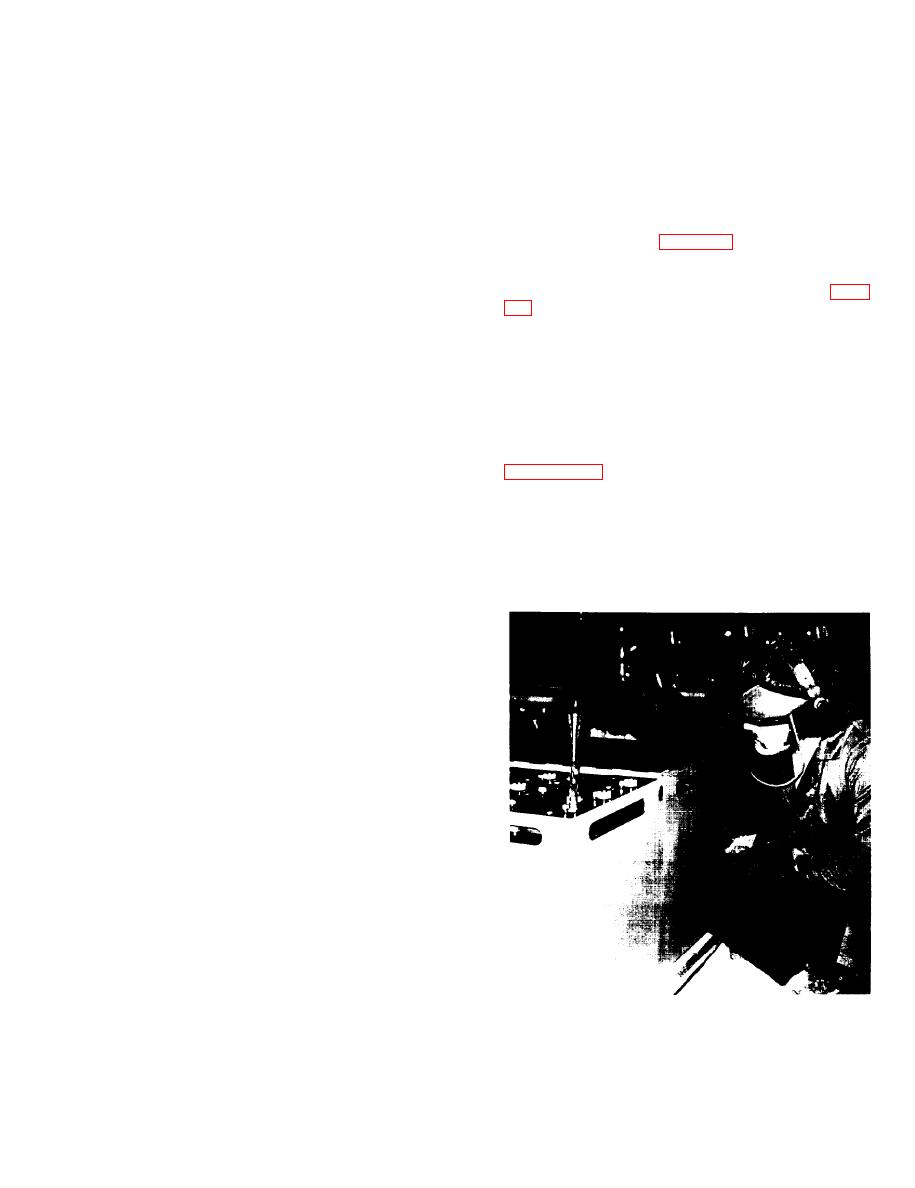
TM 10-6140-200-14
drawing into the cylinder or barrel just enough electrolyte
adjustment of the ampere-hour meter and temperature-
to permit the hydrometer float to ride free. The float
voltage relay, if either are used, as well as the timer
stem must not touch the side of the cylinder nor the top
switch.
of the syringe. If the float stem touches the upper area of
the syringe, too much electrolyte has been drawn up; if
2-14. Cleaning a Battery
the float still rests on the bottom, too little electrolyte
has been drawn up.
a. Inspect the battery at least once each month to make
certain terminal connections are tight. Remove dirt or
b. Read the hydrometer float scale with eye at same
electrolyte accumulation from the tops of the cells. Wash
level as electrolyte (See Figure 2-5). The reading should
with clean water and dry. Using a solution of baking soda
be taken at the surface of the liquid disregarding any
and water (one pound of baking soda to one gallon of
water) neutralize any acid which may be collected at cell
slight curvature. This reading will be the specific gravity
or battery terminals to keep them free from corrosion.
of the electrolyte uncorrected for temperature. See Table
b. Use the solution until all fizzing stops. Work the
solution under the connectors with a clean paint brush.
c. Return all electrolyte to cell.
To remove all traces of soda solution and loose dirt, rinse
the battery down with clear water from a low pressure
2-17. Record Keeping
hose. Whenever the battery top is being cleaned or rinsed,
vent caps must be tightly in place.
Facilities with more than just a few batteries will find
that records of battery cycles, maintenance and repair are
2-15. Adding Water
indispensable for an effective battery maintenance pro-
gram. In addition to those monthly records referenced in
a. A certain amount of water loss in cells is normal and it
time a battery is charged, the following procedure will be
should be replaced with "pure" tap water or distilled
helpful:
water. In some geographical areas tap water may contain
chemicals or other impurities harmful to batteries. The
a. Establish a battery identification system giving each
NEMA recommendation for battery replacement water
battery a code number. A multiple-digit system is sug-
lists the following maximum allowable impurities (parts
gested such as 1201, 1202, etc., for all 12 volt 375
per million) :
Total solids
350 PPM
25 PPM
Chlorides as C1
Nitrates as NO3
10 PPM
Iron as Fe
4 PPM
NOTE
Most industrial truck battery manufacturers
provide water analysis service. A minimum
sample of one quart is required.
b. Check the height of the electrolyte at least weekly
and, if water is needed, add just enough to bring the
electrolyte to proper level. Do not overfill. Never fill cells
to above the bottom of the vent well or skirt. To avoid
overfilling, it is best to add water at the end of a charge.
c. Water should be added often enough to prevent the
electrolyte level from dropping below the perforated
separator protector. Ideally a watering schedule should be
established. This would assure adequate watering while
taking into consideration those factors which control
water consumption, such as (1) frequency of charging, (2)
water storage capacity of the specific cell type and (3)
age and condition of the battery.
2-16. Taking Hydrometer Reading
a. Squeeze the syringe bulb and then slowly release it,
Figure 2-5. Taking specific gravity reading
2-7

